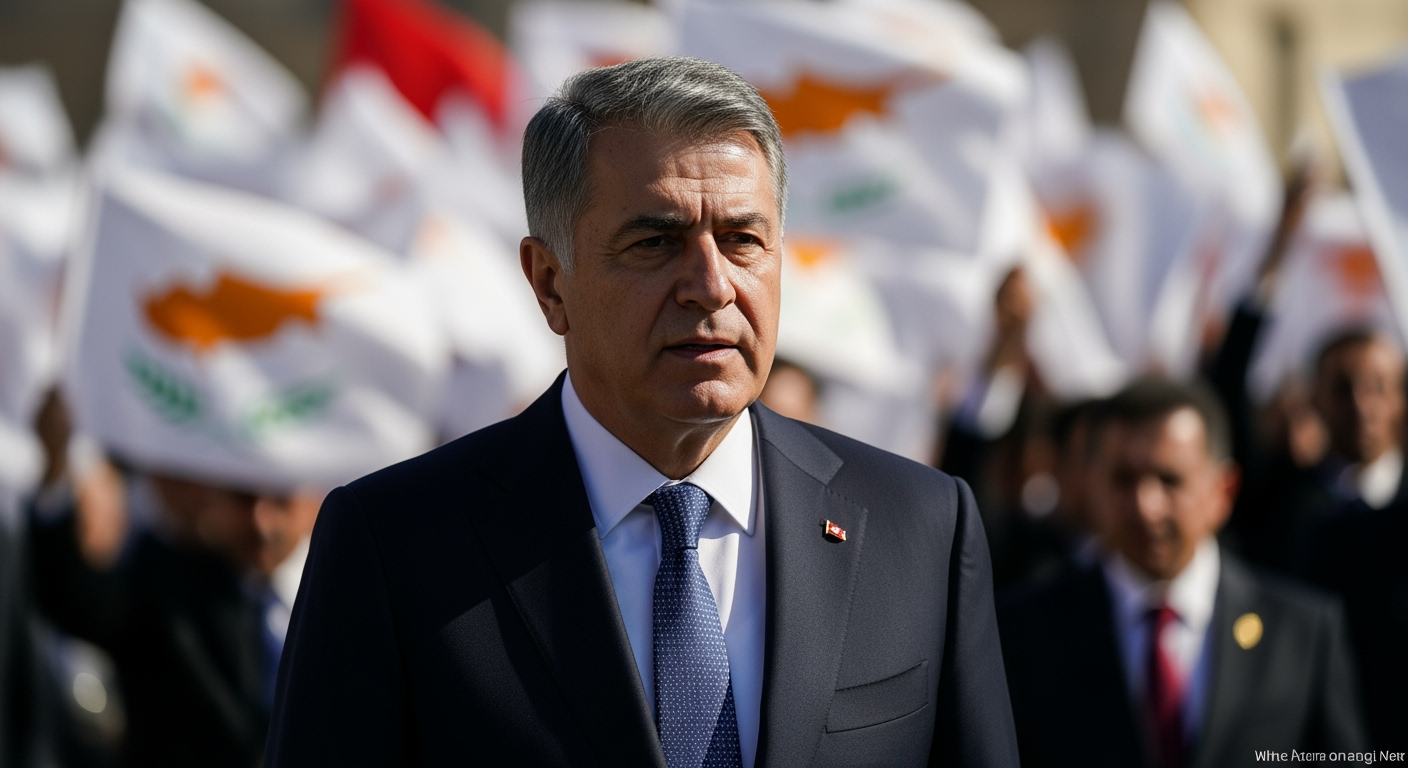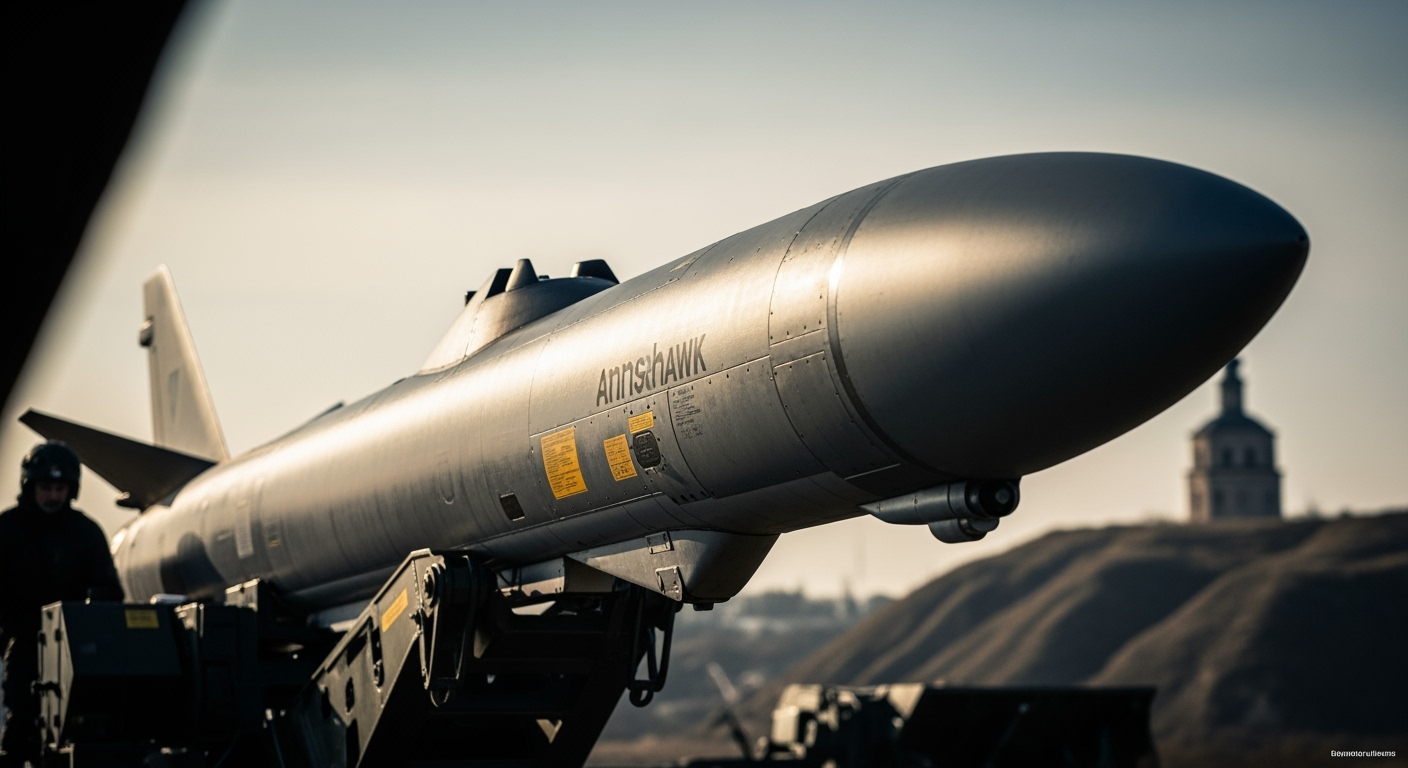Related Articles

Turkish Cypriots Elect Erhürman in Landslide, Sending Complex Signals to Ankara

China Navigates Critical Economic Crossroads with Ambitious New Five-Year Plan





Kyiv's persistent calls for U.S.-made Tomahawk cruise missiles are poised to inject a new and potentially volatile dimension into the protracted conflict in Ukraine, promising Kyiv the ability to strike deep into Russian territory while simultaneously drawing sharp condemnations and dire warnings from Moscow. As the debate intensifies among Western allies, the prospect of introducing these long-range precision weapons underscores a critical juncture in the conflict, where Ukraine seeks to level the playing field and Russia fears a significant erosion of its strategic depth.
For months, Ukrainian President Volodymyr Zelenskyy has underscored the critical need for advanced long-range weaponry, framing it as essential to counter Russia's ongoing aggression and to target the infrastructure supporting its war effort. Kyiv’s current arsenal of Western-supplied long-range missiles, such as the French-British Storm Shadow/SCALP-EG and the U.S. Army Tactical Missile System (ATACMS), offers ranges of approximately 250 to 550 kilometers. While effective, these systems have limited Ukraine’s ability to consistently strike high-value military and industrial targets deep within Russia.
The Tomahawk missile, with its formidable operational range of 1,600 to 2,500 kilometers, represents a significant leap in capability for Ukraine. This expanded reach would enable Ukrainian forces to target command and control centers, logistical hubs, oil processing facilities, military-industrial complexes, and airbases from which Russian aircraft launch missile attacks—all currently considered beyond the reach of existing weapons. Mykola Bielieskov, a fellow at Ukraine’s National Institute for Strategic Studies, highlighted that the Tomahawk would facilitate "combined attacks and better destroy oil processing, military industrial complex, logistics and command and control" within Russia.
Furthermore, the Tomahawk's design characteristics are particularly attractive to Ukraine. These subsonic cruise missiles fly at extremely low altitudes, making them difficult for conventional radar systems to detect and intercept, even in heavily defended airspace. Their advanced guidance systems, incorporating GPS, inertial navigation, and terrain-contour-matching (TERCOM), ensure exceptional accuracy, reportedly within five meters of the target. The latest Block IV and V variants can also be reprogrammed mid-flight, allowing for dynamic targeting against moving or emerging threats, and can even loiter over a target area. This precision and evasiveness would provide Ukraine with a potent tool to overcome Russia's air defense networks, which have historically intercepted some Ukrainian drones targeting Russian infrastructure.
Ukraine believes that the ability to inflict significant and consistent damage on Russia's strategic assets would alter Moscow's military calculus and compel it to consider serious negotiations. President Zelenskyy has stated that such weapons could force Russia "to see the real state of affairs, and sit down at the negotiating table," warning Kremlin officials that "they will have to know where the bomb shelters are."
The prospect of Ukraine fielding Tomahawk missiles has triggered an unequivocal and alarmed response from Moscow, which views such a development as a grave escalation with potentially catastrophic consequences. Russian officials, including Kremlin spokesman Dmitry Peskov, have expressed "extreme concern" and warned of a "serious escalation" and a "fundamentally new level of escalation" in the conflict.
Central to Russia's apprehension is the Tomahawk's extensive range, which would place major Russian cities, including Moscow and St. Petersburg, within striking distance from Ukrainian territory. This capability threatens what Russia has largely maintained as "sanctuaries" in its deep rear, areas previously thought safe from direct Ukrainian strikes. Analysts suggest that Russia's leadership harbors fears of "decapitating strikes" targeting its command structures, concerns that resonate with historical anxieties surrounding long-range precision weapons.
Another significant concern for Moscow stems from the Tomahawk's dual-use capability; while Ukraine would receive conventional variants, some Tomahawk missiles can be equipped with nuclear warheads. This raises the specter of miscalculation or misidentification in a highly tense environment. Dmitry Peskov has highlighted this, stating, "Just imagine: a long-range missile is launched and is flying, and we know that it could be nuclear." Former Russian President Dmitry Medvedev and Belarusian leader Alexander Lukashenka have gone further, issuing thinly veiled nuclear threats and warning that providing Tomahawks could lead to a wider war or even a nuclear conflict.
Moscow has consistently maintained that supplying Ukraine with long-range weapons makes Western nations "parties to the war," and the introduction of Tomahawks would, in Russia's view, "dramatically change the very essence, the very nature of the conflict." Russia's defense ministry is reportedly analyzing how the U.S. might supply these missiles and who would control their targeting, raising questions about potential direct U.S. involvement.
Despite these strong warnings, some Ukrainian officials and analysts dismiss Russia's nuclear bluster as a tactic to deter Western support. Andriy Kovalenko, head of the Center for Countering Disinformation, stated that Russia fears Tomahawks because it understands its military-industrial complex cannot be adequately protected from them, suggesting that global pressure, particularly from China, would prevent Russia from initiating a nuclear strike.
The debate over supplying Tomahawks to Ukraine highlights a broader strategic dilemma for Western nations, particularly the United States. While the missiles offer Ukraine a critical capability to strike deeper into Russia and potentially accelerate an end to the conflict, concerns about escalation remain paramount in Washington and European capitals.
Discussions at the highest levels, including those involving U.S. President Donald Trump, indicate that the decision is being carefully weighed. President Trump has floated the possibility of selling Tomahawks to Ukraine if the conflict remains unresolved, suggesting he might discuss the matter directly with Russian President Vladimir Putin. NATO's Parliamentary Assembly has also called for providing Ukraine with long-range missiles, though without specifically naming Tomahawks.
One practical challenge is the launch platform. Tomahawks are traditionally launched from naval vessels or submarines. Ukraine's naval capabilities are limited, necessitating the potential provision of ground-based launchers, such as the U.S. Army's Typhon system, or other innovative solutions. This logistical consideration adds another layer of complexity to any potential transfer.
Defense analysts suggest that while Tomahawks would be a powerful addition, they alone would not be an instant "game-changer" that wins the war overnight. However, they would significantly complement Ukraine's existing long-range strike capabilities, allowing for more impactful and sustained pressure on Russian forces and infrastructure. The cumulative effect of such precision strikes could substantially degrade Russia's ability to wage war, forcing redeployments and diverting resources, thus creating leverage for Ukraine at a potential negotiating table.
The discussion surrounding Tomahawk missiles for Ukraine represents more than just a debate over military hardware; it reflects the evolving dynamics of modern warfare and the high stakes involved in the conflict. For Ukraine, these missiles symbolize a critical need for parity in long-range strike capabilities, a tool to disrupt Russia's war machine from within its own borders, and a means to dictate the pace of potential peace negotiations. For Russia, the Tomahawk embodies a direct threat to its territorial integrity and a profound escalation that could destabilize regional and global security.
As Western leaders continue to deliberate, balancing the imperative to support Ukraine's defense with the risks of escalating tensions, the potential introduction of Tomahawk missiles remains a potent symbol of the conflict's intensity. Whether delivered or simply used as leverage, the mere discussion of these powerful weapons has already recalibrated the strategic calculations in both Kyiv and Moscow, highlighting the enduring impact of long-range precision fires on the battlefield of the 21st century.